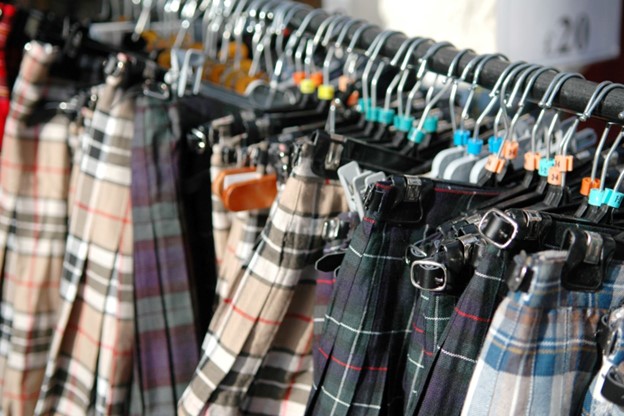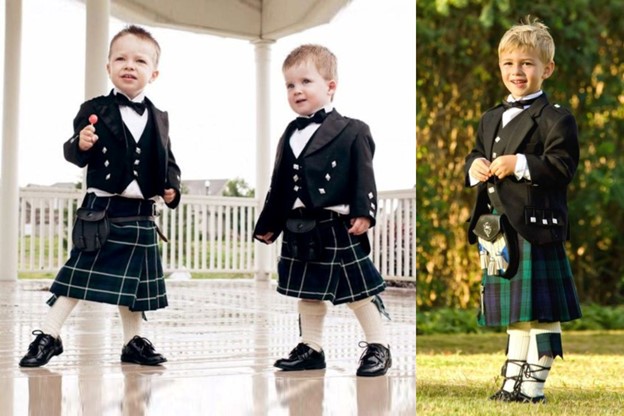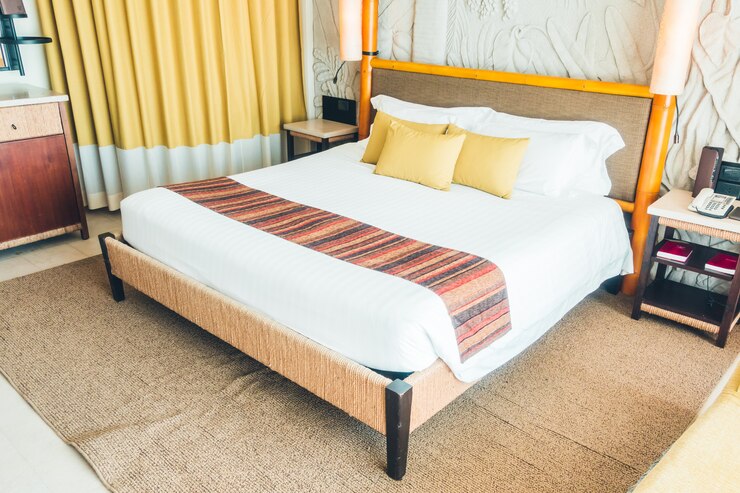What Makes Baby Kilts So Special? A Closer Look at Tradition and Style
Baby kilts, miniature versions of the iconic Scottish garment, hold a unique charm that transcends generations. Originating from Scotland, these garments carry a rich history and cultural significance. Traditionally, kilts were worn by Scottish men as a symbol of pride, clan allegiance, and heritage. Over time, they evolved into a fashion statement embraced by people worldwide. For infants, Baby kilt offers a delightful combination of tradition and practicality. They serve as more than just clothing; they represent a connection to one’s roots and a celebration of cultural identity. From the distinctive tartan patterns to the meticulous craftsmanship, each baby kilt tells a story of tradition and style.
Why Choose Baby Kilts?
Comfort and Convenience
Comfort is paramount when it comes to dressing infants, and baby kilts excel in this aspect. Crafted from soft, breathable fabrics like cotton or lightweight wool, these garments ensure that babies stay cozy and content throughout the day. Unlike constricting outfits, kilts provide ample room for movement, allowing infants to explore their surroundings freely. The loose-fitting design also accommodates diapers comfortably, making diaper changes a breeze for parents. With their gentle fabrics and ergonomic design, baby kilts prioritize both comfort and convenience, ensuring that little ones are happy and at ease.
Cultural Heritage
Choosing baby kilts is not merely a matter of style; it’s a way to honor and preserve Scottish heritage. Each tartan pattern woven into a baby kilt carries centuries of history and symbolism, representing specific clans, regions, or institutions. By dressing their infants in kilts, parents pay homage to their Scottish ancestry and instill a sense of cultural pride from an early age. Moreover, baby kilts serve as tangible links to family traditions, fostering a deeper connection to one’s roots and identity. Whether worn for special occasions or everyday wear, baby kilts embody the timeless spirit of Scottish culture.
Types of Baby Kilts
Traditional Styles
Traditional baby kilts stay true to their Scottish roots, featuring classic tartan patterns and meticulous pleating. Each tartan design represents a unique heritage, with colors and symbols denoting clan affiliations or regional identities. These kilts often incorporate traditional elements like sporran pouches and kilt pins, adding authenticity and charm. Made from high-quality wool or tartan fabric, traditional baby kilts are durable and elegant, perfect for special events or family gatherings. They embody the timeless allure of Scottish tradition while introducing infants to their rich cultural heritage.
Modern Variations
In recent years, designers have reimagined baby kilts with contemporary flair, offering a fresh take on this classic garment. Modern variations may feature vibrant colors, playful prints, or embellishments like bows and buttons, appealing to fashion-forward parents and infants alike. While still honoring Scottish tradition, these kilts embrace versatility and individuality, catering to diverse tastes and preferences. Whether adorned with modern motifs or personalized details, these kilts bring a touch of modernity to traditional attire, reflecting the evolving landscape of baby fashion.
Materials Used in Baby Kilts
Baby kilts are crafted from a variety of materials, each chosen for its softness, durability, and suitability for infant wear. Traditional kilts are often made from high-quality wool or tartan fabric, prized for their warmth and authenticity. For warmer climates or sensitive skin, cotton kilts offer a lightweight, breathable alternative, ensuring comfort without sacrificing style. Some manufacturers also offer kilts in soft fleece or jersey fabrics, providing cozy options for cooler weather. Regardless of the material, baby kilts prioritize comfort and safety, ensuring that infants stay happy and comfortable all day long.
How to Choose the Right Baby Kilt
Selecting the perfect baby kilt involves careful consideration of factors such as size, fit, and design. It’s essential to measure your baby accurately, taking into account their height, weight, and waist circumference. Many retailers provide sizing charts or guidelines to help parents choose the right fit for their little one. Additionally, adjustable closures or elasticized waistbands allow for flexibility as babies grow, ensuring prolonged wear and value for money. When it comes to design, parents can explore a wide range of tartan patterns and color combinations, selecting one that resonates with their family heritage or personal style. By choosing the right baby kilt, parents can ensure that their little one looks and feels their best on any occasion.
Benefits of Baby Kilts
Breathability and Movement
One of the key benefits of baby kilts is their breathability and freedom of movement. Unlike constricting pants or dresses, kilts allow air to circulate freely around the baby’s body, preventing overheating and discomfort, especially in warm weather. The lightweight, airy fabric of kilts enables infants to move, crawl, and explore with ease, supporting their natural development and motor skills. Whether indoors or outdoors, babies can stay cool and comfortable in their kilts, enjoying unrestricted movement and playtime.
Easy Diaper Changes
Another advantage of baby kilts is their practical design, which facilitates easy diaper changes. Unlike one-piece outfits or rompers, kilts allow parents to access the diaper area quickly and conveniently without having to remove the entire garment. This is particularly helpful during busy outings or nighttime changes when speed and efficiency are essential. With a simple lift of the kilt, parents can access the diaper without disturbing their baby’s clothing or causing discomfort. This makes diaper changes faster, easier, and more convenient for both parents and infants, reducing stress and frustration for all parties involved.
Occasions for Baby Kilts
Baby kilts are suitable for a wide range of occasions, from formal events to casual outings and everyday wear. Their timeless elegance and cultural significance make them a popular choice for special celebrations such as weddings, christenings, or family gatherings. Whether attending a formal ceremony or posing for photographs, babies look adorable and stylish in their kilts, adding a touch of charm and sophistication to any occasion. Additionally, baby kilts are practical for everyday wear, providing comfort and style for outings, playdates, or trips to the park. Their versatility and durability make them a wardrobe staple for infants, ensuring that they look and feel their best wherever they go.
Caring for Baby Kilts
To keep baby kilts looking their best, proper care and maintenance are essential. Most kilts are machine washable, making them easy to clean and care for at home. However, it’s essential to follow the manufacturer’s instructions carefully to avoid damaging delicate fabrics or embellishments. For wool or tartan kilts, gentle washing with a mild detergent and cold water is recommended to preserve color and texture. Avoid using bleach or harsh chemicals, as these can weaken the fabric and cause it to lose its shape. After washing, kilts should be air-dried flat or hung on a clothesline to prevent wrinkles and maintain their shape. Proper storage is also important to protect kilts from dust, moisture, and insects. Store kilts in a cool, dry place away from direct sunlight and humidity, preferably in a garment bag or closet organizer. By following these care tips, parents can ensure that their baby kilts remain clean, fresh, and in excellent condition for years to come.
Cultural Significance
Scottish Heritage
Baby kilts are more than just clothing; they are symbols of Scottish heritage and pride. Each tartan pattern woven into a kilt tells a unique story of clan loyalty, regional identity, and cultural tradition. For centuries, Scottish men have worn kilts as a badge of honor, signifying their allegiance to their clan and their commitment to their heritage. Today, baby kilts continue to uphold this proud tradition, serving as tangible links to Scotland’s rich cultural tapestry. Whether passed down through generations or purchased new, kilts represent a connection to one’s roots and a celebration of Scottish identity.
Symbolism Behind Tartans
Tartan patterns have deep symbolic meaning in Scottish culture, with each design representing a specific clan, family, or region. The colors and motifs woven into a tartan tell stories of history, lineage, and allegiance, reflecting the unique heritage of the wearer. For example, a red tartan might signify courage and bravery, while a green tartan might represent fertility and growth. By wearing a particular tartan, individuals honor their family heritage and pay tribute to their ancestors, keeping their traditions alive for future generations. Whether displayed in kilts, scarves, or other garments, tartans serve as powerful symbols of Scottish identity and pride.
Fashion Trends with Baby Kilts
Baby kilts have become more than just traditional attire; they are also fashion statements embraced by parents and designers worldwide. In recent years, kilts have experienced a resurgence in popularity, thanks to their timeless charm and versatility. Influential figures in entertainment and fashion often showcase their infants in kilts, sparking interest and admiration among parents seeking unique styling options for their little ones. Designers have responded to this demand by offering a wide range of kilts in various styles, colors, and patterns, catering to modern tastes and preferences. From classic tartans to contemporary prints, baby kilts are now available in a myriad of designs, ensuring that there’s a kilt for every occasion and aesthetic. Whether dressed up for a special event or dressed down for everyday wear, babies look effortlessly chic and stylish in their kilts, making them a must-have accessory for fashion-forward families.
Customization Options
Personalized Designs
One of the advantages of baby kilts is the ability to customize them to suit individual preferences. Many retailers offer customization services, allowing parents to create bespoke kilts tailored to their specifications. From selecting specific tartan patterns to choosing colors, fabrics, and embellishments, the customization options are virtually endless. This enables parents to create unique, one-of-a-kind kilts that reflect their family heritage, personal style, and cultural identity. Whether incorporating family tartans, embroidered monograms, or personalized motifs, customized kilts become cherished keepsakes that are treasured for years to come. By opting for customization, parents can ensure that their baby’s kilt is as unique and special as they are.
Embroidery and Monograms
Embroidery adds an extra layer of personalization to baby kilts, transforming them into truly unique and memorable garments. Many retailers offer embroidery services, allowing parents to add names, initials, dates, or special messages to their baby’s kilt. Whether embroidered on the hem, waistband, or sporran pouch, these custom details add a personal touch and make the kilt truly one-of-a-kind. Embroidery allows parents to commemorate special occasions, milestones, or family traditions, creating heirloom-quality garments that will be cherished for generations. By choosing embroidery and monograms, parents can make their baby’s kilt even more meaningful and special, ensuring that it becomes a treasured keepsake for years to come.
Baby Kilts in the Modern World
While baby kilts have deep roots in Scottish tradition, they have also found a place in the modern world, captivating parents worldwide with their timeless charm and practicality. Thanks to their versatility, durability, and aesthetic appeal, baby kilts have become popular fashion staples for infants of all ages. Their influence extends far beyond Scotland’s borders, inspiring designers, celebrities, and parents alike to embrace this classic garment. From formal ceremonies to casual outings, baby kilts are suitable for a wide range of occasions, adding a touch of elegance and sophistication to any ensemble. Whether worn as part of a traditional Scottish outfit or paired with modern separates, kilts offer endless styling possibilities for fashion-forward families. As the demand for baby kilts continues to grow, they are poised to remain a beloved fashion staple for generations to come, bridging the gap between tradition and modernity in the world of children’s fashion.

Discover Scotland’s Essence: A Visit to a Scottish Store
If you’re looking to immerse yourself in the rich cultural heritage of Scotland, look no further than a Scottish store. These establishments offer a treasure trove of authentic Scottish goods, from traditional kilts and tartan fabrics to artisanal crafts and gourmet delicacies. Stepping into a Scottish store is like taking a journey through Scotland’s storied past, with every item reflecting the country’s vibrant history and cultural identity. Whether you’re in search of a stylish kilt to honor your Scottish ancestry or a unique souvenir to commemorate your trip, a Scottish store has something for everyone. With their wide selection of high-quality products and personalized service, these stores provide a truly immersive experience that celebrates all things Scottish. So whether you’re a seasoned Scot or a curious visitor, be sure to pay a visit to a Scottish store and discover the magic of Scotland for yourself.
Safety Considerations
Avoiding Hazards
When dressing infants in kilts, it’s essential to prioritize safety and minimize potential hazards. Avoid accessories like pins, brooches, or other small objects that could pose choking risks or be easily pulled off by curious little hands. Instead, opt for kilts with secure closures, such as Velcro or snap buttons, that are less likely to come loose or detach during wear. Additionally, ensure that kilts fit comfortably without being too tight or restrictive, as tight clothing can impede circulation and cause discomfort for babies. By prioritizing safety when selecting and dressing infants in kilts, parents can minimize risks and ensure that their little ones stay safe and comfortable at all times.
Quality Assurance
When purchasing baby kilts, it’s essential to choose reputable manufacturers known for their quality craftsmanship and attention to detail. Look for kilts made from high-quality materials that are soft, durable, and safe for infant wear. Inspect garments for any loose threads, rough seams, or other potential hazards that could pose risks to babies. Additionally, check that kilts meet safety standards and regulations for children’s clothing, ensuring that they are free from harmful chemicals or substances. By choosing kilts from trusted brands with a reputation for excellence, parents can feel confident that they are providing their babies with safe, comfortable, and stylish attire that meets the highest quality and safety standards.
Conclusion
In conclusion, baby kilts are more than just clothing; they are symbols of tradition, style, and cultural heritage. From their origins in Scottish culture to their global appeal in modern fashion, baby kilts embody the timeless spirit of tradition and innovation. Whether worn for special occasions or everyday wear, kilts offer comfort, style, and practicality for infants worldwide. With their soft fabrics, intricate designs, and personalized details, kilts celebrate individuality while honoring the past. As parents continue to embrace this classic garment, baby kilts will remain a beloved fashion staple for generations to come, bridging the gap between tradition and modernity in children’s fashion.
FAQs About Baby Kilts
1. Are baby kilts suitable for all climates?
Baby kilts come in various fabrics, making them suitable for both warm and cold climates. Lightweight cotton kilts are ideal for summer, while wool or fleece options provide warmth in colder weather.
2. Can I customize a baby kilt with my family tartan?
Yes, many retailers offer customization services, allowing you to choose specific tartan patterns or create unique combinations that reflect your family heritage.
3. Are baby kilts easy to care for?
Yes, most baby kilts are machine washable for convenience. However, following care instructions is essential to preserve their quality and longevity.
4. At what age can my baby wear a kilt?
Baby kilts are designed to accommodate infants of various ages and sizes. Some parents dress their babies in kilts from birth, while others wait until they are a few months old.
5. Are there safety concerns associated with dressing babies in kilts?
While kilts are generally safe for infants, it’s essential to avoid accessories that could pose choking hazards and ensure garments fit comfortably without restricting movement.







